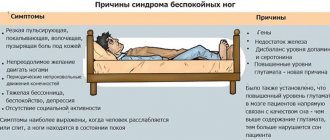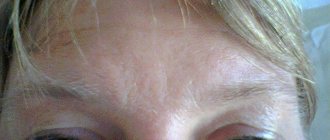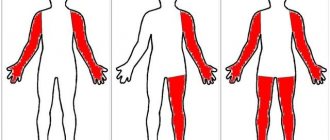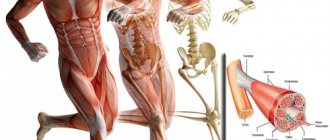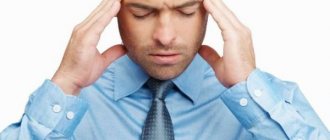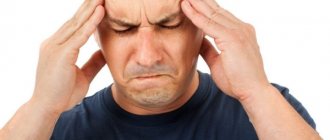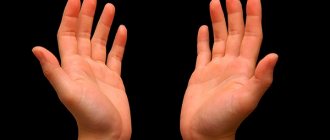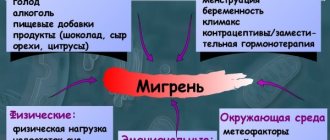Dysphagia is a violation of the act of swallowing, the movement of a bolus of food along the esophagus from the oral cavity to the stomach. It is expressed as difficulty, inability to carry out the act of swallowing, food and liquid getting into the nose, trachea. This pathology is diagnosed in both children and adult patients. An elderly person cannot swallow food - what to do about it and how to help him, read on.
Esophageal neurosis symptoms treatment
After all, if you remove the symptoms, then the root of the problem remains, which means it will soon “grow” and make itself felt. In short, you need to treat neurosis in general, and not focus on its symptoms (neurosis of the esophagus). Of course, this does not mean that you need to forget about the symptoms and treat only the psyche, the physical components require attention, it’s just that the main treatment is to restore the psyche as a whole (treatment of neurosis), that’s all.
If esophageal neurosis is not treated, then the disease will not go away, but a neurotic personality will develop, which may not have a very good effect on relationships with others in everyday life. For prevention, it is recommended to eat non-irritating foods. At the end of the article, I would like to show you how alcohol affects the esophagus: Good mental health to you!
Esophageal contraction when eating food, cramps, difficult swallowing (esophagospasm) - all this can be a consequence of damage to the nervous system. The spasmodic root cause is also neurosis of the esophagus. Symptoms and treatment of esophageal spasms Causes of spasms Upper narrowing of the esophagus Diagnosis and how to treat Spasm of the lower esophagus Treatment Spasms of the esophagus along the length Treatment Spasms due to stress and nervous disorders First aid Diagnostics Treatment Traditional methods Herbal medicine Diet General massage Psychotherapy Prognosis and prevention Esophageal spasm.
Difficulty swallowing (dysphagia) of the esophagus
Since it occurs on a nervous basis, symptoms appear and disappear.
There are no deviations when swallowing, but during the digestion process the patient complains of:
- stomach ache;
- burping;
- a feeling of bitterness in the mouth;
- heartburn;
- something starts to interfere when swallowing;
Symptoms are especially aggravated if a person has eaten right before going to bed. Symptoms of the disease may also include:
- the formation of a large amount of saliva;
- hoarse voice;
- severe pain a few seconds after swallowing.
Causes of the diseaseThe main causes of esophageal dysphagia:
- fish bone or piece in the throat;
- presence of head or spinal injury;
- disruption of muscle and nerve function;
- spasms of the esophagus;
- stroke;
- blockage of the esophagus;
- dermatomyositis;
- multiple sclerosis;
- pathologies of the neuromuscular system,
etc. - post-polio syndrome;
- muscle dystrophy;
Esophageal blockages are diseases of the esophagus accompanied by dysphagia, which can be caused by the following problems:
- malignant tumor in the esophagus or other organ adjacent to the esophagus;
- protrusion of the organ wall.
- inflammation in the mucous membrane of the organ of various origins;
- aging of the body, which has led to inhibition of muscle tone;
Causes of the disease also include:
- jam
- organ burns from alkaline, acidic or chemical substances;
Symptoms
Dysphagia
The disease, depending on the localization of the pathological process, can be:
- oropharyngeal or oropharyngeal. In this case, the food bolus is difficult to move from the pharynx into the esophagus itself;
- esophageal or esophageal. It progresses if the lumen of the esophageal tract is blocked or due to disruption of its muscle structures. Clinicians still conventionally divide it into upper, middle and lower;
- cricopharyngeal incoordination.
Esophageal dysphagia
The disease can be treated correctly only by understanding the type of lesion. Temporary (functional) dysphagia causes excessive stimulation of some cortical centers of the brain.
False signals contribute to short-term spastic contractions of the circular muscles of the esophagus. The condition is provoked by mental illness, stress, and strong emotions.
In such cases, people say that the symptoms develop “from nervousness.”
In this case, there are no mechanical obstacles to the movement of food. A similar symptom can occur in a child with a reluctance to eat something, fear, hysterical behavior. Nervous dysphagia accompanies other manifestations of neurosis: irritability, tearfulness, insomnia. In such cases, treatment by a neuropsychiatrist is indicated.
The use of soothing methods helps to avoid swallowing disorders.
Organic causes include diseases of the esophagus and stomach, mouth and pharynx, thyroid gland, heart, and brain. The most significant lesions of the esophagus include: inflammation (esophagitis); narrowing due to scars after a burn (alkali or acid), developmental anomalies, cardiospasm, replacement with connective tissue in scleroderma; - the acidic contents of the stomach are thrown back into the lower part of the esophagus, causing inflammation and irritation; wall diverticula - saccular protrusions due to the weakening of individual sections of the muscular membrane; they can be congenital or formed as a result of long-term untreated
Providing medical care
The principles of treatment are directly dependent on the cause of the swallowing disorder.
In the presence of a space-occupying formation leading to a disorder in the mechanics of advancement (tumor, scar, esophageal diverticulum), they are surgically excised.
Diseases of the pharynx of an infectious-inflammatory nature are treated using a complex of appropriate drugs and techniques, while functional (nervous) dysphagia requires treatment by a neurologist or psychotherapist (psychoneurologist).
For dysphagia caused by reflux esophagitis, treatment is carried out with drugs of the Omeprazole and Domperidone class.
Dysphagia is a swallowing disorder caused by a neurogenic and physiological nature.
And his muscles also contracted on command from above.
In addition to these quickly passing moments, there is also a test when “due to nervousness a piece does not fit into the throat.” But although it is long-lasting, it passes over time. The state of “coma in the throat”, “constricted throat” can also arise due to purely neurological reasons, when a disease of the nervous system has existed for a long time or has just arisen, leading to a swallowing disorder, perceived as a feeling of choking on food or drink.
Neurological pathology leading to the development of dysphagia syndrome includes both acutely developed conditions and diseases that cause changes in the nervous system gradually and over a long period of time.
The first category includes the following diseases:
- .
- ;
- ;
- ;
The second includes:
- ;
- .
- ;
- ;
Parkinson's disease almost always provokes difficulties in swallowing food. There are other pathologies, but their contribution to the development of dysphagia is less significant.
It would seem, what do botulism and Parkinson's disease have in common - between low-quality home-canned food and senile infirmity? And among other reasons too? The active principle in all these dissimilar conditions is poisons. If during botulism the brain is acutely affected by the toxin of a microorganism that multiplies without access to air, then (at any age) under-oxidized metabolic products are formed in the brain tissue.
Table of contents
Symptoms of dysphagia
Dysphagia - what is it
Oropharyngeal dysphagia
Swallowing disorders in stroke
Paradoxical dysphagia
Sideropenic dysphagia
Neurogenic dysphagia
Swallowing dysfunction in older people
Dysphagia in children
Dysphagia after fundoplication
Functional dysphagia
Diagnostics
Severity
Treatment
Speech therapy massage
Which doctor should I contact?
Esophageal dysphagia: symptoms and treatment
Cicatricial narrowings occur after chemical burns and radiation therapy for thoracic oncology.
When the esophagus is compressed by tumors of the chest organs (lung cancer, bronchi), enlarged lymph nodes of the mediastinum, paraesophageal hiatal hernia, cardiac pathology with severe myocardial hypertrophy. Violation of coordinated contraction of the esophageal muscles can be a sign of achalasia, total spasm of the esophagus, diabetes mellitus, and scleroderma.
Infectious diseases (tuberculosis) and uncontrolled use of certain drugs (calcium antagonists, nitrates) can lead to disruption of esophageal peristalsis. Symptoms of esophageal dysphagia:
- in the initial stage of the disease, patients complain of difficulty swallowing dry, solid food; retrosternal pain, drooling, often heartburn, dry cough, hoarseness appear; As the symptoms progress, the symptoms increase, and difficulties appear when swallowing soft foods and then liquids. Types of dysphagia All diseases occurring with dysphagia syndrome, depending on the anatomical level of swallowing disorders, are divided into:
- Oropharyngeal (oropharyngeal) dysphagia is a violation of the formation of a food coma and its movement into the pharynx, in this case the initial swallowing movements are disrupted.
The causes may be neurological pathology, thyromegaly, lymphadenopathy, oncological diseases of the head and neck, and degenerative processes of the spine.
Soil (earth) in Russia
To improve properties, it is usually made from black soil and peat, possibly with the addition of sand.
Fertile soil is a special mixture, for the preparation of which peat, black soil, compost, various additives and fertilizers are taken. There are many varieties of plant and fertile soils. Each group has its own parameters for components and their percentages.
In addition, the amount of each component may vary within certain limits, depending on the technology adopted by the manufacturer.
Here are some popular types, with their trade names: 1. Vegetable - is the top fertile layer of soil, without any additives. The price is usually 1.5 - 2.5 times lower than other categories. 2. Artificial chernozem is plant soil (70%), to which peat, sand and compost are added (all 10%).
3. Garden - plant soil (70%) with the addition of sand, peat and rotted manure (all 10%).
4. Fertile - humus of tree bark and horse manure (30 each), bottom peat (25%), loam (10%), vermicompost (5%), mineral fertilizers. It has a high degree of fertility.
5. Lawn - heavy or medium loamy soil (60%), peat and quarry sand (20% each).
Used as a basis for rolled lawns.
6. Sowing – light loamy soils (50%), peat (30%), sand (20%). Due to the increased peat content, this soil can be used both for sowing lawn grass and for mulching.
7. Park - fertile soil layer (60%), peat and compost based on horse manure (20% each).
8.
Folk remedies
Treatment with folk remedies is allowed only for mild pathology, which is caused by nervous tension, inflammation of the throat or esophagus, hyperacid gastritis.
To relax muscles and calm nerves, a collection of sweet clover, oregano, nettle, kelp, hops, and mint is used. Dry herbs take 1 tsp. and mix. The mixture (1 tablespoon) is brewed with boiling water (300 ml) in a thermos. After 30 minutes, filtering is performed, the product is taken 100 ml of warm broth 3 times a day.
A collection based on rose hips, calendula and chamomile flowers, mint, licorice, sage, and rue has a general strengthening and anti-inflammatory effect. Plant components must be mixed in equal quantities. The collection (2 tablespoons) is brewed with boiling water (1 liter) in a thermos and left for an hour. You should take ½ cup of the decoction 40 minutes after meals.
To reduce blood pressure and normalize the functioning of the stomach, a collection of motherwort herbs, hawthorn flowers, mint leaves, and calamus root is used. 1 tsp. each dry raw material is mixed in a glass jar. You will need 1 tbsp. l. mixture, which is brewed with boiling water (500 ml). In the morning, 20 minutes before breakfast, drink 150 ml of decoction, and then repeat before lunch and dinner.
On the subject: Flourless custard: ingredients, recipe with description, cooking features
Treatment of peptic ulcer disease is carried out using in complex therapy a medicinal collection from identical parts of fennel fruits, chamomile flowers, licorice and marshmallow roots, wheatgrass rhizomes, and yarrow herb. The mixture (1 tbsp) is poured with boiling water (200 ml). Infusion is carried out for half an hour, and then you need to take ½ glass 3 times a day.
Treatment with herbal remedies should be carried out for 10 days, and then a break of 2 weeks is required. If desired, herbal medicine can be resumed by changing the composition of the medicinal collection. If nausea, headache, skin rashes, stool disorders and other symptoms appear during treatment, then therapy is canceled.
Esophageal neurosis symptoms and treatment
The disease becomes reflexive in nature and causes cardiospasm.
Let's look at the causes of spasms, their types, as well as the main treatment methods, methods of diagnosis and prevention. Impairments in swallowing food may indicate a malfunction of the peripheral nervous system. Causes of spasms Most often, the main factors influencing the development of this disease are:
- eating very cold, hot, spicy or dry food;
- food or drug poisoning, damage to the body by toxins;
- viral diseases such as bronchitis, influenza, measles and others;
- incorrect choice of dentures for teeth.
- injuries to the esophagus caused by eating rough food;
- overwork;
- stressful environment and, as a result, overexcitement;
- fever, convulsions;
- lack of sleep;
- experiences against a background of fear;
- entry of foreign bodies into the esophageal tract;
The above causes of esophageal spasm are typical when they occur once.
In the case of a chronic disease, you should pay attention to the presence of the following signs:
- damage to the body by toxins, accompanied by infection or an allergic reaction;
- inflammatory process of the vagus nerve;
- nervous diseases (neuroses, panic attacks, constant stressful situations that do not have emotional manifestations)
- deterioration of the condition of the muscular tube or paralysis of the latter, which may be a consequence of dysfunction of connective tissue and endocrine organs;
Diagnosis of pathology
Tests for difficulty and discomfort when swallowing include:
Studying the patient's medical history and identifying complaints.
- Analysis of the history of relatives for the presence of diseases of the gastrointestinal tract.
- Examination of the patient by palpation of the lymph nodes in the neck.
- Biochemical and clinical blood test.
- Coprogram.
- Esophagogastroduodenoscopy - examination using a special apparatus of the stomach, esophagus and duodenum and, if necessary, taking a fragment of the esophageal mucosa for further examination (biopsy).
- Laryngoscopy is an examination of the back of the throat with an endoscope.
- X-ray examination of the esophagus.
- Ultrasound examination of the abdominal organs to identify the condition of organs whose lesions can cause dysphagia.
- Irrigoscopy is an x-ray of the esophagus using a special liquid.
- Electroencephalography of the brain, if pathology of the nervous system is suspected in the absence of mechanical factors of damage to the esophagus.
Nervous dysphagia
The patient may experience pain only with the development of diffuse spasm.
Medical care comes down to measures to free the respiratory tract from food that has entered them and restore the patency of the esophagus when a food coma gets stuck in it. If the causes leading to dysphagia in everyday life are ignored, the consequences can be the most tragic: perforation of a diverticulum leading to mediastinitis, rupture of an aneurysm aorta, which can cause death within minutes, a slow decline from esophageal cancer.
This implies the need to prevent the pathology leading to the described condition. Info It is carried out through clinical observation by doctors: pediatrician, oncologist, ENT doctor, neurologist and other specialists.
- Only liquid food can be swallowed.
- The act of swallowing becomes completely impossible.
- Diseases of the esophagus accompanied by dysphagia
- scleroderma;
- chemical burn of the esophagus;
- inflammation of the organ mucosa;
- benign tumor of the esophagus;
- esophageal diverticula;
- hernia of the opening of the diaphragm through which the esophagus passes;
- congenital narrowing of the muscle ring where the pharynx passes into the esophagus (Schatzky rings);
- foreign body;
- cancer;
- benign stricture;
- spasm of the esophageal mouth;
- spasm of the lower esophageal sphincter;
- acquired or congenital dissection of esophageal tissue.
- Plummer's syndrome;
- reflux esophagitis;
Therapy
Treatment of swallowing reflex disorders should be comprehensive. Therapy is prescribed to relieve local symptoms and eliminate the underlying disease. To improve the condition of inflammation of the esophagus, the patient is prescribed a course of treatment with Zantac, Phosphalugel and other antacids. When food particles enter the nasopharynx, the doctor provides immediate assistance and clears the airways.
Further treatment depends on the underlying disease causing dysphagia. For example, for sore throat, antibiotics are prescribed. If the walls of the esophagus are affected by benign and malignant neoplasms, their surgical removal and chemotherapy are required.
On the topic: What is a life guide - how to find yours?
The doctor also corrects eating behavior. It is advisable to eat often and in small portions. Hard and dry foods and foods that can damage the esophagus are removed from the diet.
Swallowing problems with VSD
Having problems with the endocrine system can aggravate dystonia, which in turn can cause such a problem. People with vegetative-vascular dystonia have the ability to create entire chains in their own thinking, which, in their opinion, are not devoid of logic, which quickly take on real shape.
In them, they draw a parallel between the presence of unpleasant manifestations of a lump in the throat with the possible and imminent death of themselves, which causes them serious panic attacks.
Negative events that occurred many years ago and associated with the inability to swallow can become the root cause of the development of panic attacks at the slightest repetition of the situation or the appearance of its characteristic features.
The main feature of the work of a person’s consciousness is the consolidation of negative aspects that are accompanied by a constant fear of recurrence of panic attacks, therefore the main cause of anxiety and fear lies in the state of a person’s mental, rather than physical, health. Factors that provoke problems with swallowing are: a nervous spasm of the larynx that occurred earlier during a meal, which left an unpleasant impression; a vivid attack of panic, during which the person clearly imagined the possibility of suffocation; a nervous lump in the throat, which focused on itself all the person’s experiences (most often found in days of severe depression or anxiety), causing him to worry about the inability to eat;
Prevention
To reduce the risk of dysphagia, you must follow simple recommendations:
- You should stop smoking.
- A balanced diet is required, and if possible, rough foods should be avoided.
- It is necessary to promptly treat ailments of the esophagus, throat, and ENT organs.
- It is important to have regular check-ups with your doctors.
To prevent problems in your child, it is important to monitor what toys he plays with. They should not contain small parts that could be easily swallowed.
Therefore, dysphagia must be treated promptly. Only effective therapy will relieve unpleasant symptoms. And preventive measures will prevent this pathology.
Esophageal neurosis
Such a spasm can occur without food - a feeling of compression, the presence of a foreign body. Nerve spasms can be detected by X-ray examination. Manifests itself in a feeling of a coma in the upper esophagus.
It is also possible to manifest two types of food neurosis at once - sensitive and motor (described above). It does not matter what type of esophageal neurosis a person has, because they have the same cause - a mental disorder (neurosis).
Therefore, to defeat neurosis, you need to get rid of the causes that cause this disorder, and not the symptoms of the disease.
After all, if you remove the symptoms, then the root of the problem remains, which means it will soon “grow” and make itself felt. In short, you need to treat neurosis in general, and not focus on its symptoms (neurosis of the esophagus). Of course, this does not mean that you need to forget about the symptoms and treat only the psyche, the physical components require attention, it’s just that the main treatment is to restore the psyche as a whole (treatment of neurosis), that’s all. If esophageal neurosis is not treated, then the disease will not go away, on the other hand, a neurotic personality will develop, which may not have a very good effect on relationships with others in everyday life. For prevention, it is recommended to eat non-irritating foods.
In young women, the cause of this unpleasant condition is neuroses.
Speech therapy massage
Therapeutic massage is widely used in medicine, both in adults and children. In neurology, it is used for pathologies of the central and peripheral nervous system.
Speech therapy massage is one of the types of therapeutic massage. It is carried out using a special probe with various attachments. Special techniques have been developed for this type of massage. The efforts of the logopath are aimed at:
- to normalize muscle tone, relieve spasms of facial and chewing muscles;
- improvement of blood circulation, metabolic processes, nerve conduction.



